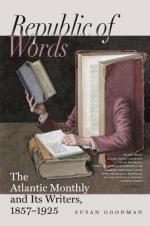The reader will, perhaps, thank us for a few hints as to the choice of stereoscopes and stereoscopic pictures. The only way to be sure of getting a good instrument is to try a number of them, but it may be well to know which are worth trying. Those made with achromatic glasses may be as much better as they are dearer, but we have not been able to satisfy ourselves of the fact. We do not commonly find any trouble from chromatic aberration (or false color in the image). It is an excellent thing to have the glasses adjust by pulling out and pushing in, either by the hand, or, more conveniently, by a screw. The large instruments, holding twenty-five slides, are best adapted to the use of those who wish to show their views often to friends; the owner is a little apt to get tired of the unvarying round in which they present themselves. Perhaps we relish them more for having a little trouble in placing them, as we do nuts that we crack better than those we buy cracked. In optical effect, there is not much difference between them and the best ordinary instruments. We employ one stereoscope with adjusting glasses for the hand, and another common one upon a broad rosewood stand. The stand may be added to any instrument, and is a great convenience.
Some will have none but glass stereoscopic pictures; paper ones are not good enough for them. Wisdom dwells not with such. It is true that there is a brilliancy in a glass picture, with a flood of light pouring through it, which no paper one, with the light necessarily falling on it, can approach. But this brilliancy fatigues the eye much more than the quiet reflected light of the paper stereograph. Twenty-five glass slides, well inspected in a strong light, are good for one headache, if a person is disposed to that trouble.
Again, a good paper photograph is infinitely better than a bad glass one. We have a glass stereograph of Bethlehem, which looks as if the ground were covered with snow,—and paper ones of Jerusalem colored and uncolored, much superior to it both in effect and detail. The Oriental pictures, we think, are apt to have this white, patchy look; possibly we do not get the best in this country.
A good view on glass or paper is, as a rule, best uncolored. But some of the American views of Niagara on glass are greatly improved by being colored; the water being rendered vastly more suggestive of the reality by the deep green tinge. Per contra, we have seen some American views so carelessly colored that they were all the worse for having been meddled with. The views of the Hathaway Cottage, before referred to, are not only admirable in themselves, but some of them are admirably colored also. Few glass stereographs compare with them as real representatives of Nature.




